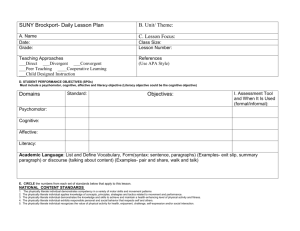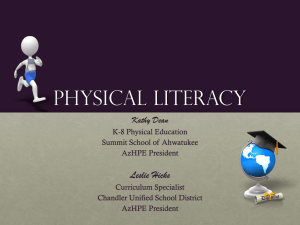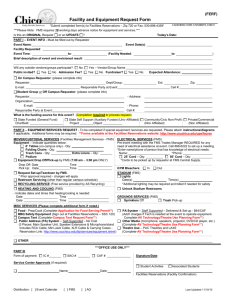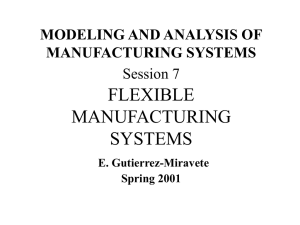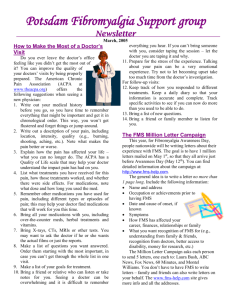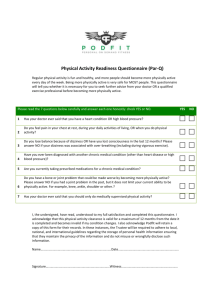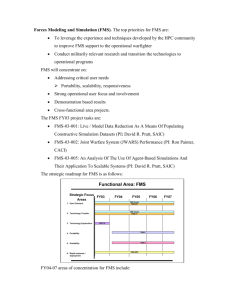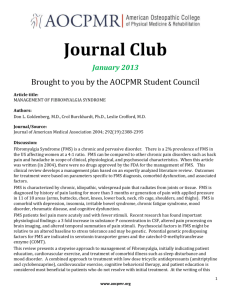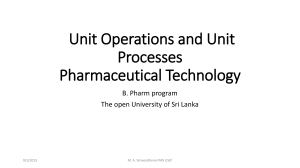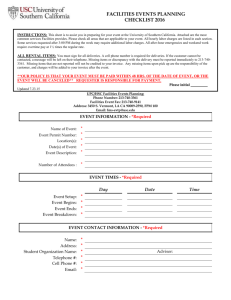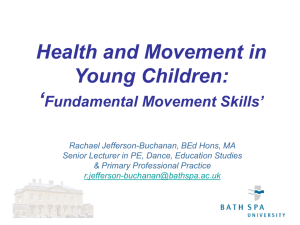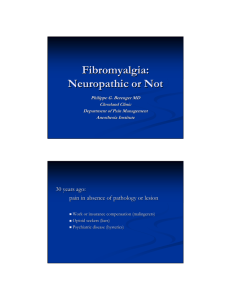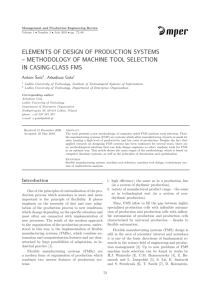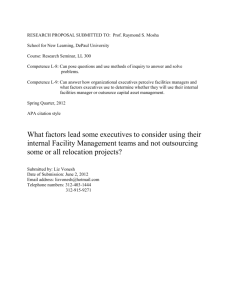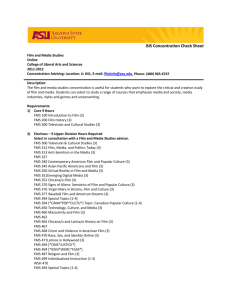Literature review first draft-Mark Donald
advertisement
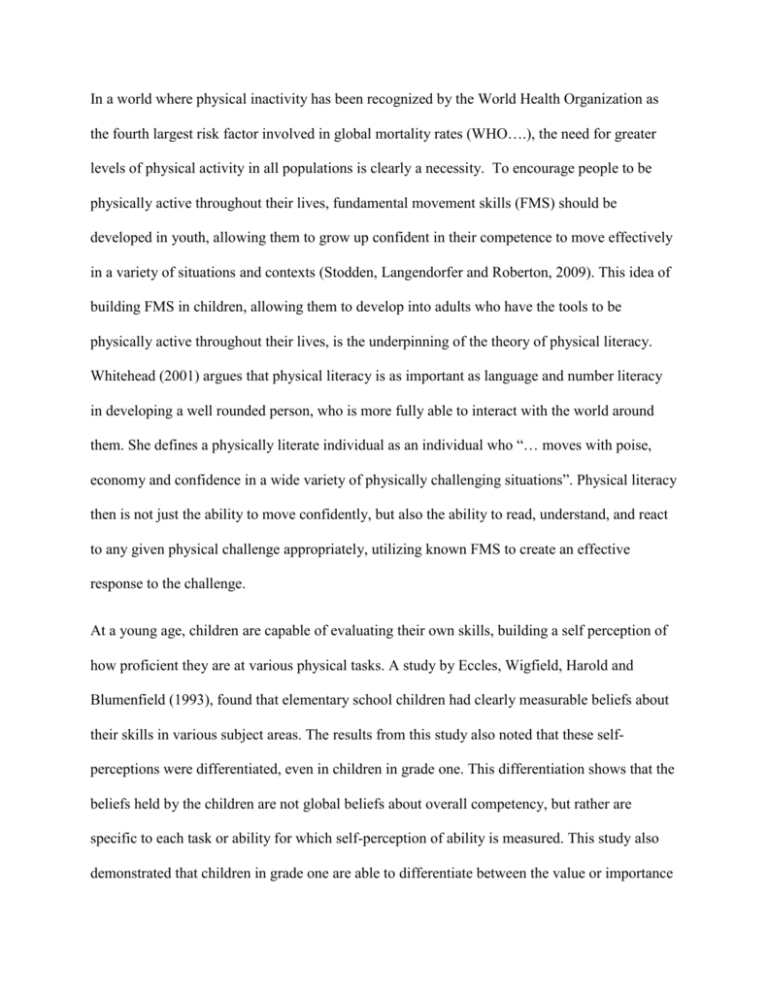
In a world where physical inactivity has been recognized by the World Health Organization as the fourth largest risk factor involved in global mortality rates (WHO….), the need for greater levels of physical activity in all populations is clearly a necessity. To encourage people to be physically active throughout their lives, fundamental movement skills (FMS) should be developed in youth, allowing them to grow up confident in their competence to move effectively in a variety of situations and contexts (Stodden, Langendorfer and Roberton, 2009). This idea of building FMS in children, allowing them to develop into adults who have the tools to be physically active throughout their lives, is the underpinning of the theory of physical literacy. Whitehead (2001) argues that physical literacy is as important as language and number literacy in developing a well rounded person, who is more fully able to interact with the world around them. She defines a physically literate individual as an individual who “… moves with poise, economy and confidence in a wide variety of physically challenging situations”. Physical literacy then is not just the ability to move confidently, but also the ability to read, understand, and react to any given physical challenge appropriately, utilizing known FMS to create an effective response to the challenge. At a young age, children are capable of evaluating their own skills, building a self perception of how proficient they are at various physical tasks. A study by Eccles, Wigfield, Harold and Blumenfield (1993), found that elementary school children had clearly measurable beliefs about their skills in various subject areas. The results from this study also noted that these selfperceptions were differentiated, even in children in grade one. This differentiation shows that the beliefs held by the children are not global beliefs about overall competency, but rather are specific to each task or ability for which self-perception of ability is measured. This study also demonstrated that children in grade one are able to differentiate between the value or importance of a skill, and their self-perception of their competence in that particular skill. This lends support to expectancy-value models of achievement behaviour, which purports that the relative value of a skill and the child’s expectation of success in that skill (which reflects self perception of ability) are two separate constructs. These models propose that the child’s beliefs independently have an influence on future activity choice and participation. The findings of Lintunen, Valkonen, Leskinen and Biddle (1999) provide evidence that supports the idea that a child’s self perception of ability has an impact on activity choice. This study further noted that participation in physical activity was positively influenced by perceived sports competence in Hungarian youth. The role of perceived ability in determining future physical activity levels can be explained partially by the ego and task motivation theories described in sport psychology. In the ego motivation theory, the level of motivation to participate is derived from the amount of success in external measures, such as winning or displaying superior skills to others with minimal effort (Ref?) . In task motivation theory, levels of motivation to participate arise from success in internal measures, such as improvement of one’s skills (Duda, 1993). In ego motivation, low perceived competence would present a barrier to achieving success and likely results in choosing to not engage in physical activity, while in task motivation low perceived competence would provide for plenty of opportunity to improve skills, resulting in higher future activity levels. Research by Allender, Cowburn, and Foster (2006) examined multiple qualitative studies to examine barriers and motivators in regards to physical activity, and found that for young children and adults, the acquisition of new skills (building FMS) was a motivator. A barrier for adults however, was anxiety in new situations, as well as a lack of role models. Older adults also found a lack of role models to be a barrier, along with unclear guidance. This indicates that a lack of FMS to transfer to new situations or opportunities for physical activity was preventing these individuals from being physically active. A physically literate individual with a strong base of FMS should be able to adjust to new situations and take on new physical challenges regardless of stetting or level of instructions. Fundamental movement skills include “basic movements such as throwing, kicking, running, jumping, hopping and catching” (Canadian Sport for Life, 2011). Rosalie and Muller (2010) discuss the idea that they can be learned in one context, and then transferred and applied in new similar and dissimilar contexts. This transfer of learning is an adaptation to a new environment. The fundamental movement skill has several components, such as coordination, execution of movement, knowledge, and ability to read a physical situation and know when to use the FMS (Rosalie and Muller, 2010). The “feedforward” aspect of the skill, being able to understand what is occurring in the environment and anticipating when to execute the FMS is essential to being able to transfer the skill to a new environment. This suggests that the physical competence to execute the FMS is only a part of the effective transfer of skills, and that the anticipatory mechanisms developed by a physically active individual when learning the FMS are what allows for a person to successfully adapt to a new activity. This is supported by Whitehead (2001, p.XXX), who describes a physically literate individual as “perceptive in 'reading' all aspects of the physical environment, anticipating movement needs or possibilities and responding appropriately to these, with intelligence and imagination.” As argued above, the physically literate individual is able to read situations, and use their FMSs to develop a physical response to the environmental challenge presented to them. Children perceive their abilities, and tend to adjust their participation in activities based on this self perception. The purpose of this study is to examine if a child’s self-perception of their ability to try new activities is reflected in their overall physical literacy. We hypothesize that there will be a positive correlation between perceived ability to try new activities and overall physical literacy scores.


